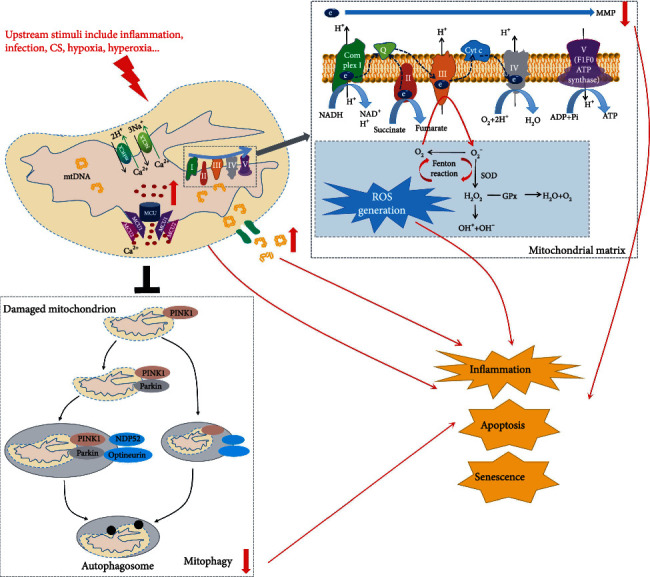Figure 2.

Mitochondrial dysfunction is characterized by increased mtROS, reduced MMP, increased calcium influx, mtDNA damage and release, and abnormal mitophagy. Mitochondrial homeostasis can be disrupted by upstream stimuli including inflammation, infection, CS, hypoxia, and hyperoxia, resulting in mitochondrial dysfunction. mtROS production in the respiratory chain depends on the release of electrons out of the ETC. Electrons that leak out of the ETC react with oxygen to produce O2-, which detoxifies into H2O2 via SOD. Glutathione peroxidase (GPx) converts H2O2 to water. If unquenched, H2O2 can form the highly reactive OH· by reacting with metal ions. Reduced MMP and mitochondrial calcium overload are important indicators of mitochondrial dysfunction, which has a profound influence on oxidative stress, inflammatory response, and apoptosis. mtDNA mutation and release impair mitochondrial respiratory chain, amplify mtROS, and accelerate mitochondrial dysfunction. Defective mitophagy results in the accumulation of damaged mitochondria. These abnormalities are able to cause oxidative stress, inflammasome activation, apoptosis, and senescence.
